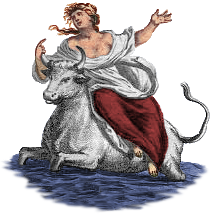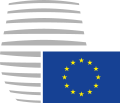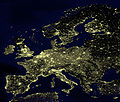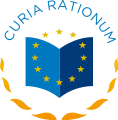Portal:European Union
Introduction
The European Union (EU) is a supranational political and economic union of 27 member states that are located primarily in Europe. The Union has a total area of 4,233,255 km2 (1,634,469 sq mi) and an estimated total population of over 449 million. The EU has often been described as a sui generis political entity combining the characteristics of both a federation and a confederation. Containing 5.8% of the world population in 2020, EU member states generated a nominal gross domestic product (GDP) of around US$16.6 trillion in 2022, constituting approximately one sixth of global nominal GDP. Additionally, all EU states except Bulgaria have a very high Human Development Index according to the United Nations Development Programme. Its cornerstone, the Customs Union, paved the way to establishing an internal single market based on standardised legal framework and legislation that applies in all member states in those matters, and only those matters, where the states have agreed to act as one. EU policies aim to ensure the free movement of people, goods, services and capital within the internal market; enact legislation in justice and home affairs; and maintain common policies on trade, agriculture, fisheries and regional development. Passport controls have been abolished for travel within the Schengen Area. The eurozone is a group composed of the 20 EU member states that have fully implemented the economic and monetary union and use the euro currency. Through the Common Foreign and Security Policy, the union has developed a role in external relations and defence. It maintains permanent diplomatic missions throughout the world and represents itself at the United Nations, the World Trade Organization, the G7 and the G20. Due to its global influence, the European Union has been described by some scholars as an emerging superpower. In 2012, the EU was awarded the Nobel Peace Prize. The United Kingdom became the only member state to leave the EU, in 2020; ten countries are aspiring or negotiating to join it. (Full article...) Selected article The International Court of Justice (known colloquially as the World Court or ICJ) is the principal judicial organ of the United Nations. Its seat is in the Peace Palace at The Hague, Netherlands. Established in 1945 by the Charter of the United Nations, the Court began work in 1946 as the successor to the Permanent Court of International Justice. The Statute of the International Court of Justice, similar to that of its predecessor, is the main constitutional document constituting and regulating the Court. The ICJ should not be confused with the International Criminal Court or a court exercising jurisdiction under Belgium's War Crimes Law, both of which also potentially have "global" jurisdiction. English and French are its two official languages. The Court's workload is characterised by a wide range of judicial activity. Its main functions are to settle legal disputes submitted to it by states and to give advisory opinions on legal questions submitted to it by duly authorised international organs and agencies. The number of decisions made by the ICJ has been relatively small, but there has clearly been an increased willingness to use the Court since the 1980s, especially among developing countries, although the USA withdrew from compulsory jurisdiction in 1986, meaning it accepts the court's jurisdiction on only a case-to-case basis. Selected pictureMap credit: Olaus Magnus The carta marina is the earliest detailed map of the Nordic countries. It took twelve years to finish and the first copies were printed in 1539 in Venice. Its existence had long been considered apocryphal, until a copy was discovered in Munich in 1886. The map is divided in 3×3 sheets with the dimension 55x40 cm (22x16 in), each made from a separate woodcut block. Historia de gentibus septentrionalibus (Rome, 1555) is a much larger commentary on the map.
Did you know?...that Monaco, San Marino, and Vatican City all mint their own euro coins, with their own national symbols on the back, despite not being EU members? Selected cityZagreb is the capital and the largest city of the Croatia. It is located in the northwest of the country, along the Sava river, at the southern slopes of the Medvednica mountain. Zagreb lies at an elevation of approximately 122 m above sea level. In the census of 2011 the population of the city was 790,017. Zagreb is a city with a rich history dating from the Roman times to the present day. The oldest settlement in the urban area of the city is Andautonia, a Roman settlement in the place of today's Ščitarjevo. The name "Zagreb" is mentioned for the first time in 1094 at the founding of the Zagreb diocese of Kaptol, and Zagreb became a free royal town in 1242, whereas the origin of the name still remains a mystery in spite of several theories. In 1851 Zagreb had its first mayor, Janko Kamauf, and in 1945 it was made the capital of Croatia when the demographic boom and the urban sprawl made the city it's known nowadays. General imagesThe following are images from various European Union-related articles on Wikipedia.
TopicsFeatured contentFeatured articles
Featured lists
Featured contentGood articles
CategoriesRelated portalsAssociated WikimediaThe following Wikimedia Foundation sister projects provide more on this subject:
Discover Wikipedia using portals |
































































